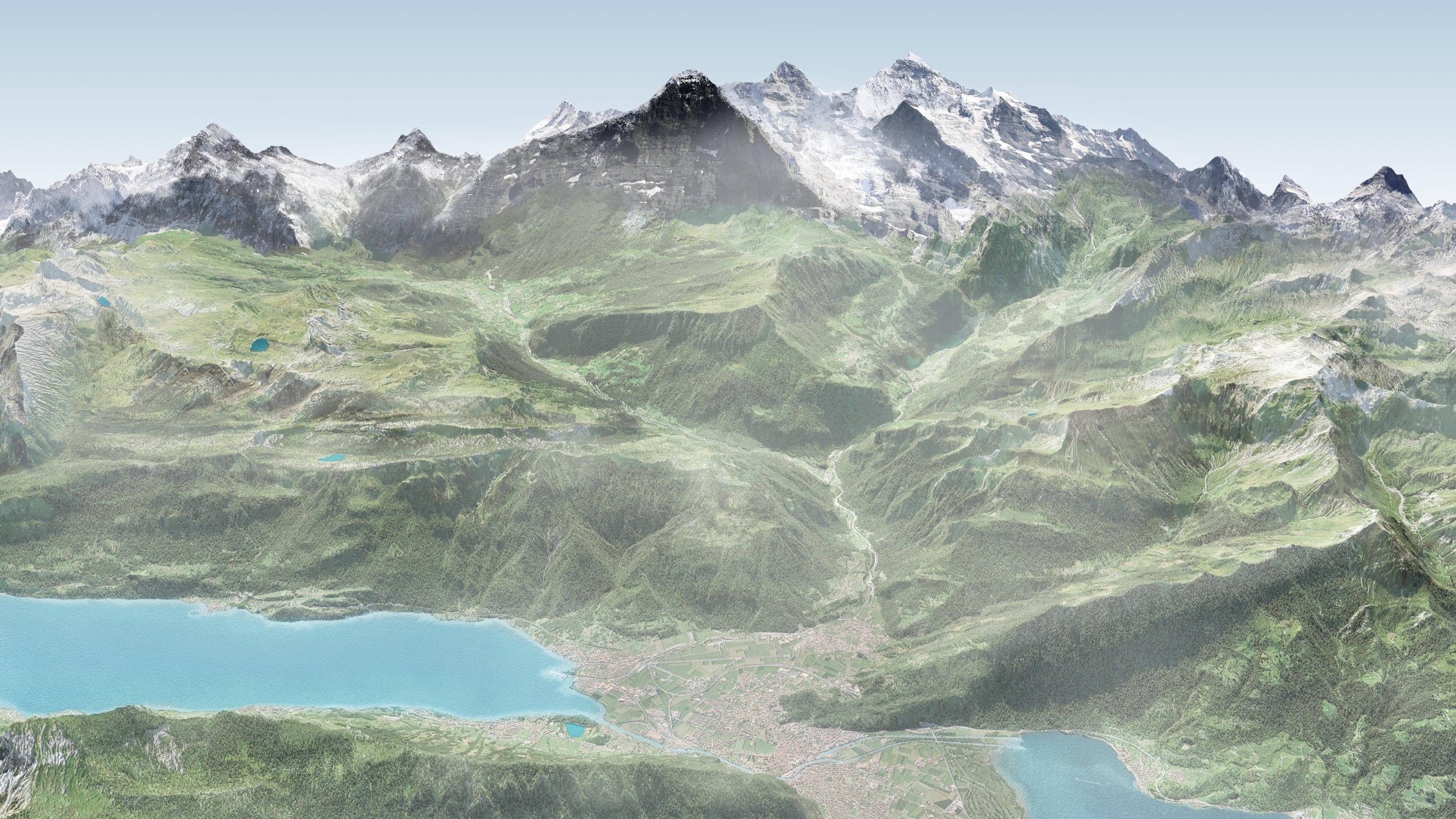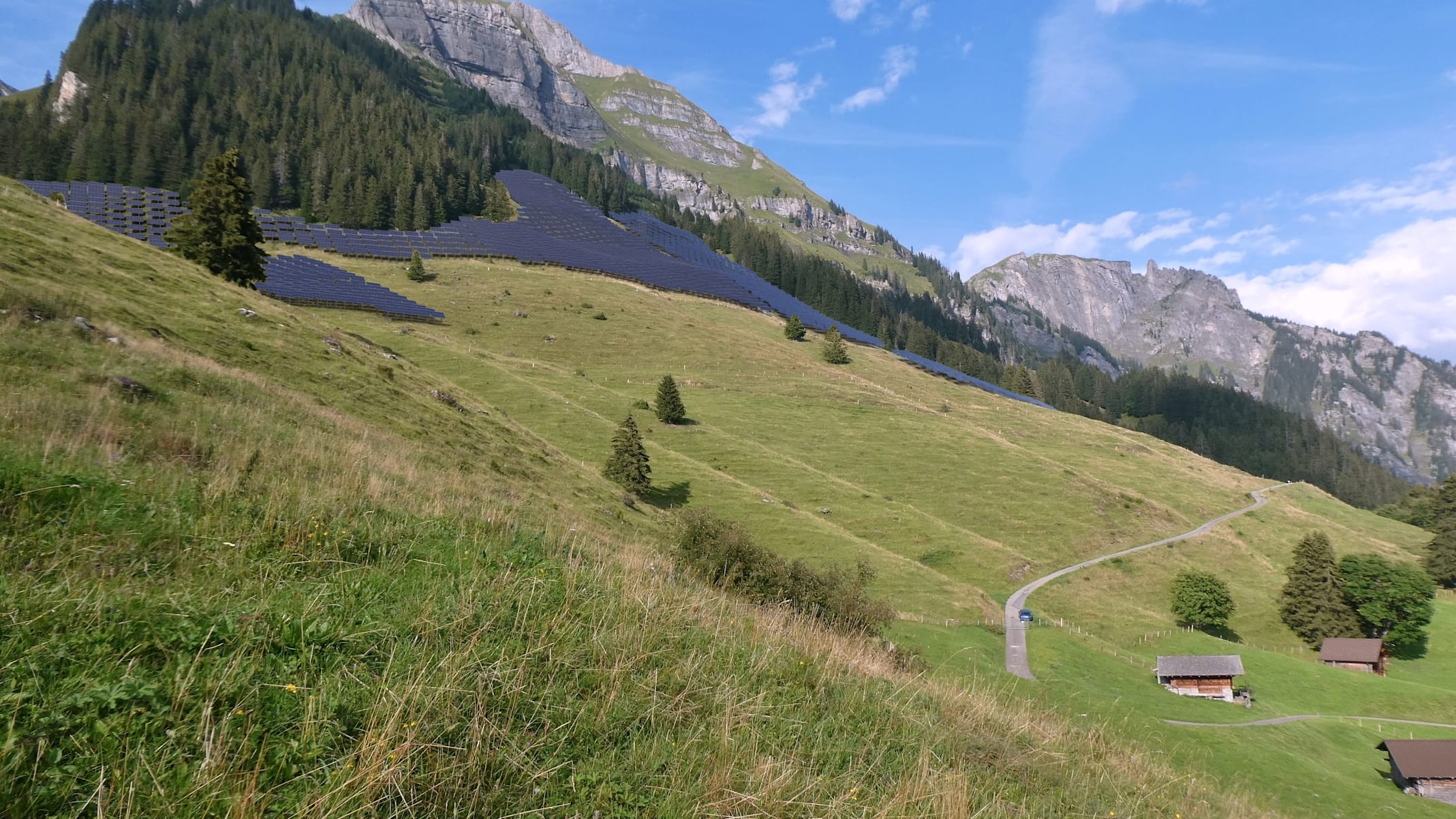
Lütschental power station
In Lütschental, Jungfraubahn AG operates its own hydroelectric power plant with two machines (total 12 MW). With its own medium voltage (16 kV) and distribution network (400 V), the Jungfrau Railway power plant also supplies Jungfrau Railway, Schynige Platte Railway, Berner Oberland Railway, Wengernalp Railway and Mountain Railway Lauterbrunnen-Mürren as well as the municipalities Lütschental, Gündlischwand, Zweilütschinen and Burglauenenen with electricity.
Support
24/7 phone: +41 33 828 77 77
Alpine solar power system Hintisberg
The Jungfrau Railways are planning a 12 hectare alpine solar system on Alp Hintisberg. The goal is to produce around 12 GWh per year. This means that 3,000 households can be supplied. On Friday, November 24, 2023, a majority at the community meeting of the Lütschental community said yes to an alpine Hintisberg solar power plant. The people of Lütschental had dealt intensively with the project, as was shown by a well-attended information event a few weeks before the vote. The Hintisberg mountain community, which will, among other things, receive compensation per kilowatt hour produced, had already given the project the green light in June 2023.
With the approval of the Hintisberg solar power system, a step has been taken towards a self-sufficient, sustainable power supply. This will lead to attractive electricity prices in the long term. The system will produce valuable electricity, especially during the day in winter, when a lot of electricity is needed in our network and it has to be purchased expensively on the market. With an alpine solar system, less of this expensive electricity has to be purchased. This promotes lower electricity prices. Private households will benefit from this just as much as the Jungfrau Railways. The building application was submitted at the beginning of March 2024.
Energy portal
On our energy portal, our electricity customers can view their bills, check their payment status, report a move or relocation, check their electricity consumption and - if your meter has already been replaced by a smart meter - view the 15-minute load profile. Energy portal Jungfrau Railway power station
Plan Information Service
When planning a construction project, it is important to know where our plant management lines are located. For planning offices, entrepreneurs and private companies in cooperation with Energie Thun AG, we offer the opportunity to find out more about the progress of our electricity lines. The current data is available 24/7 at the following link:
Jungfrau Railway Power Station Plan Information Service
The following forecasts must be met for planning information:
- Valid email address
- One-time registration
- Accepting the Terms of Use
The information (plans) will be sent by email as PDF (or DWG/DXF) in A3/A4 format in scale 1:200 to the registered email address and are free of charge.
Orders for pipeline information in other formats are subject to a charge and can be ordered from the Jungfrau Railways power station.
Do you have any questions or would you like special plan formats? We will be happy to help you at [email protected] or 033 828 77 77.
History
The Jungfraubahn AG commissioned construction of today’s hydroelectric power station on the Schwarze Lütschine River in 1906/08 for the purpose of generating electricity for the railway. Over the years, minor and major renewal and modernization works have been carried out without any substantial alteration to the basic building structure. The distinctive machine house, now slightly hidden by the bushes and trees on the river banks, was constructed according to plans drawn up by the architectural offices of Haller& Schindler, Zurich.

- Grindelwald
- Interlaken Ost
- Zweilütschinen
- Kraftwerk Lütschental
Milestones
- On 29 October 1890, Adolf Guyer-Zeller (Zurich) received a permit for construction of a water plant on the Schwarze Lütschine in Lütschental.
- The construction work began at the end of November 1906. The construction was carried out by the Alioth electricity company in Müchenstein-Basel as general contractor. The architects Haller & Schindler in Zurich were responsible for the design and the construction.
- After only two years of construction, the power plant could be commissioned on 3 November 1908. Equipment of the central site: 4 Pelton turbines each with 1,370 HP with generators of 1,000 kV A each, 7,500 volts, 400 rev/Min., 40 Hz
- Thanks to the rewinding of the generators 1 through 4 by the Haefely Basel company, the output of the four generators could each be increased to 1,150 kV A in 1916.
- In 1923, the four machine groups were rebuilt for frequencies between 40 and 50 Hz, i.e. 400 and 500 rpm.
- A fifth machine group with a 2,900 HP turbine and 2,500 kV A generator could be put into operation in 1926. The five machines were operational until 2010.
- Starting in 1932, the Jungfrau Railways distribution network could be operated with the Bernese power plants BKW in the interconnected system
- In 1960, the final phase of the Jungfrau Railways high-voltage grid at 16 kV and 50 Hz was completed. The frequency converter from 40 Hz to 50 Hz could be permanently shut down.
- On 27 October 2003, work began on the new water intake and weir system in Burglauenen. On 19 August 2005, the new weir system had a celebratory inauguration.
- Due to the age of the existing machines, the new construction of the production facility was launched in 2008. The work of project "G55" was successfully completed in 2011. Newly in operation are 2 vertical, 6-nozzle Pelton turbines, which together have an installed capacity of 11.5 MW. Each year, approximately 55 GWh of electricity is now generated from approximately 35 GWh.

